The world’s wettest rainforests are home to some of the most unique amphibians on the planet. These creatures have adapted to thrive in humid and dense environments, making them rare and fascinating. Here are some of the rarest amphibians found in these lush, tropical rainforests.
Harlequin Poison Frog
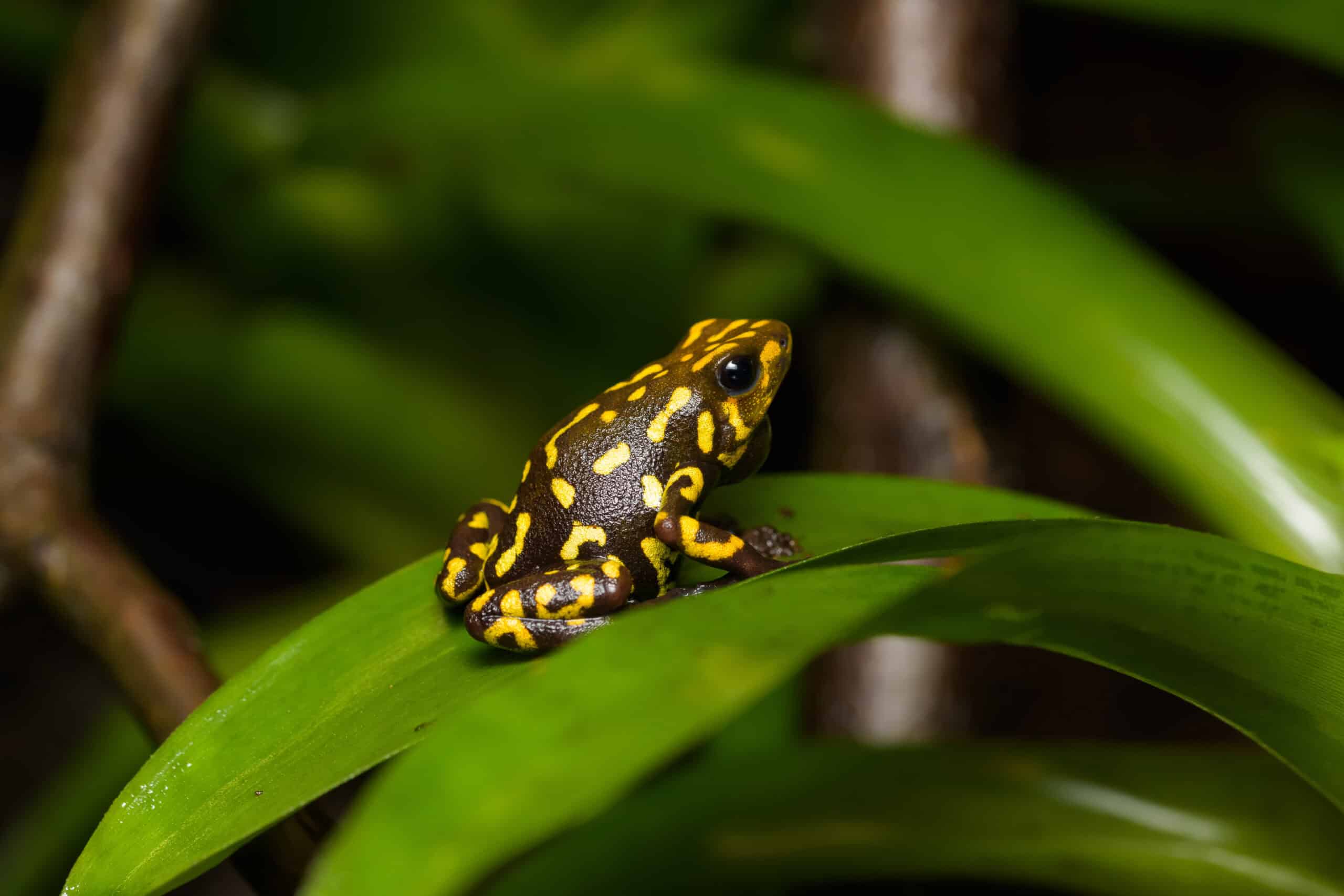
The Harlequin Poison Frog is known for its striking color patterns. It displays a mix of bright yellow, orange, and black across its skin. Found in the rainforests of Central and South America, this tiny frog is highly toxic. It uses its vibrant colors as a warning to potential predators. These frogs are often found near streams and wet forest floors, where they hunt for small insects.
Golden Mantella
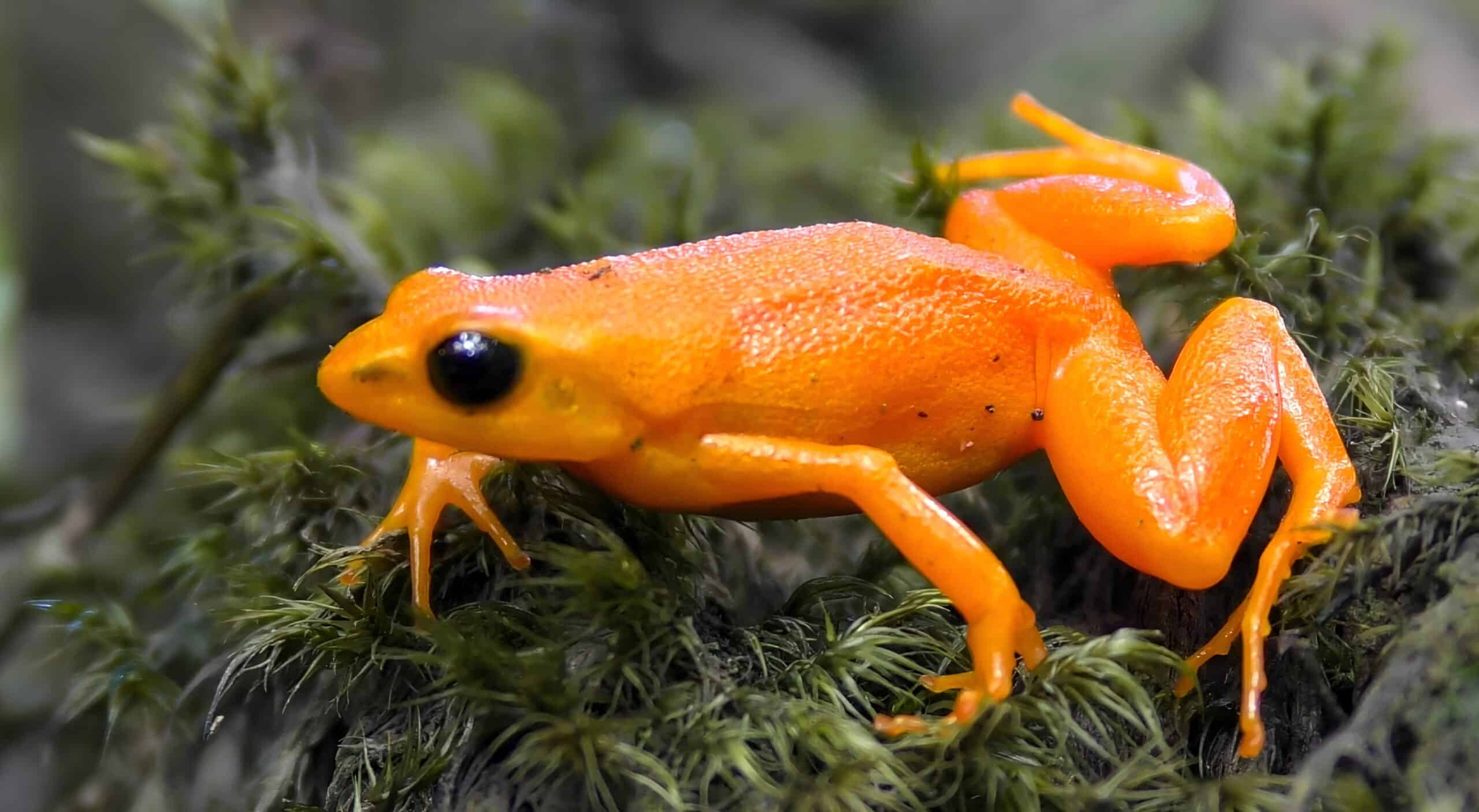
Native to the rainforests of Madagascar, the Golden Mantella is a small but brightly colored frog. Its vivid yellow or orange hue serves as a warning to predators about its toxicity. These frogs prefer wet environments, hiding under leaves or near water sources. Despite their small size, they play an essential role in controlling insect populations. Habitat loss has made this species increasingly rare.
Chinese Giant Salamander
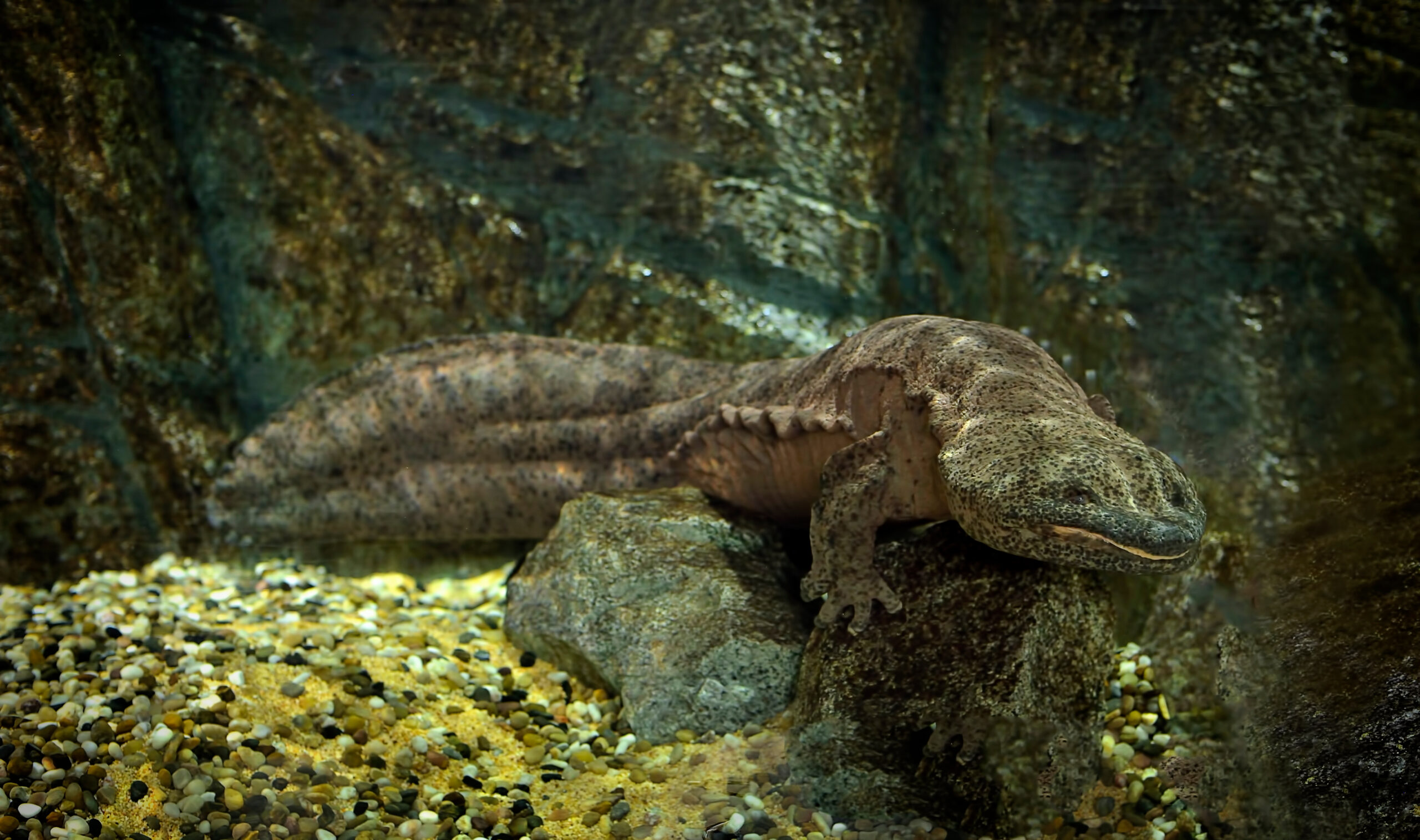
The Chinese Giant Salamander is the largest amphibian in the world. Reaching up to 6 feet in length, this massive creature resides in the cool, wet streams of China’s rainforests. Its wrinkled skin and flat head make it well adapted to aquatic life. It feeds on fish, crustaceans, and insects, using its wide mouth to capture prey. This species is critically endangered due to habitat destruction and illegal hunting.
Panamanian Golden Frog
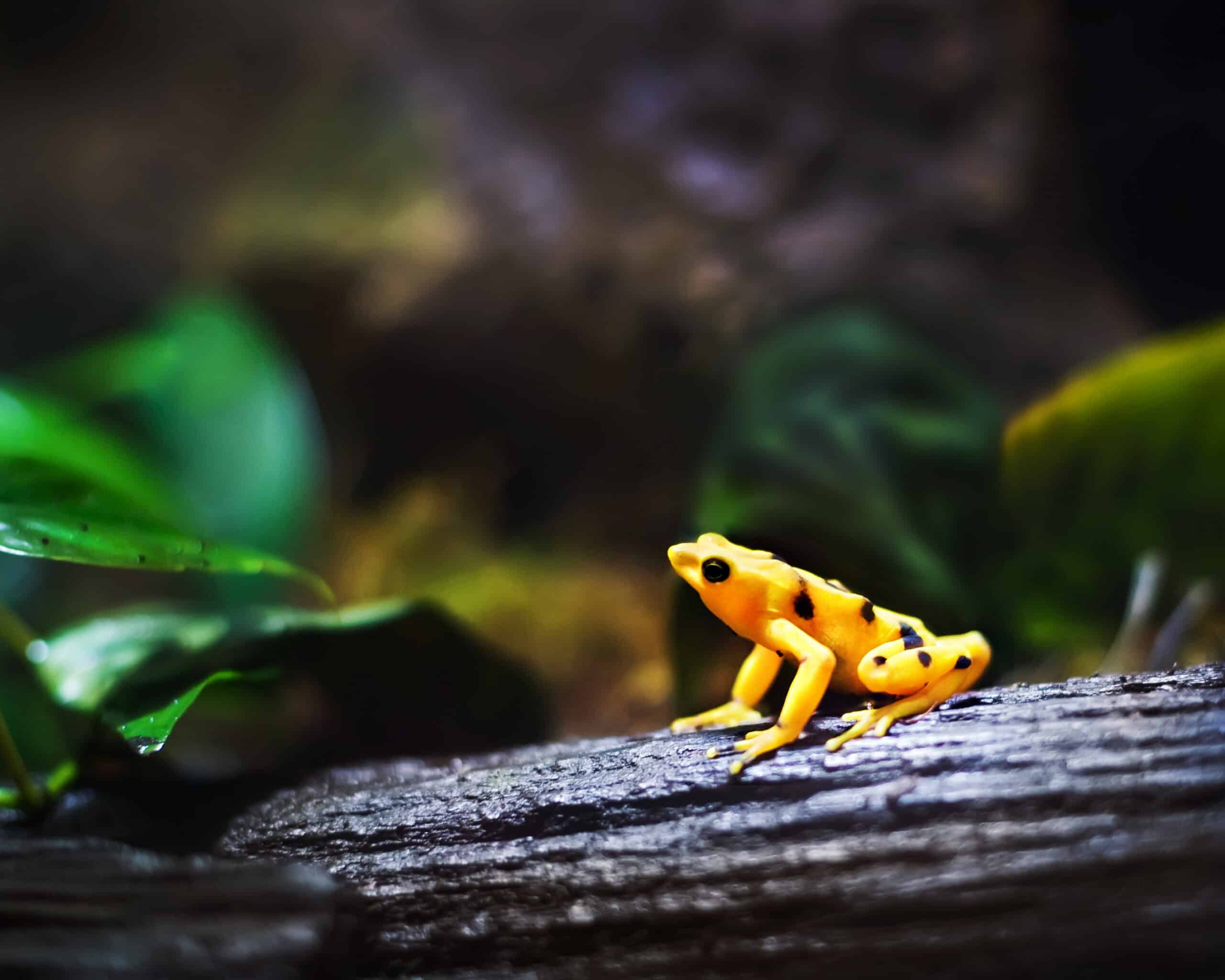
The Panamanian Golden Frog is a small, bright yellow amphibian found in the rainforests of Panama. Known for its unique communication methods, it waves its limbs to signal to others. It thrives near fast-flowing streams and waterfalls, where it hunts for small insects. Unfortunately, this species has been severely affected by a deadly fungal disease, leading to a dramatic decline in its population.
Blue Poison Dart Frog
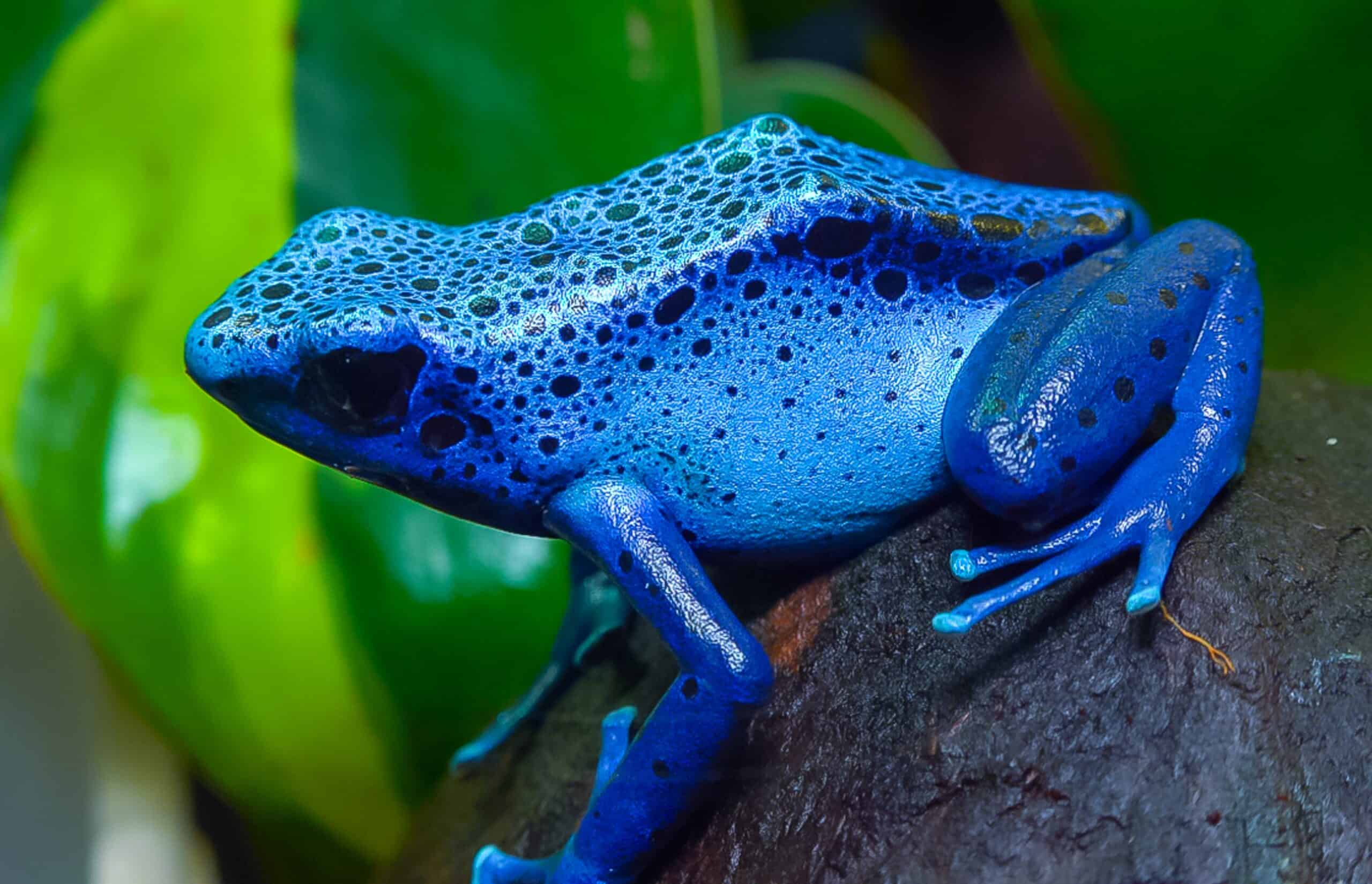
The Blue Poison Dart Frog stands out with its bright blue skin dotted with black spots. Found in the rainforests of Suriname, this small frog is highly toxic. Its skin secretes potent toxins that protect it from predators. These frogs are often seen near water, where they breed and hunt for food. Despite their beauty, they are endangered due to habitat loss and illegal pet trade.
Hellbender
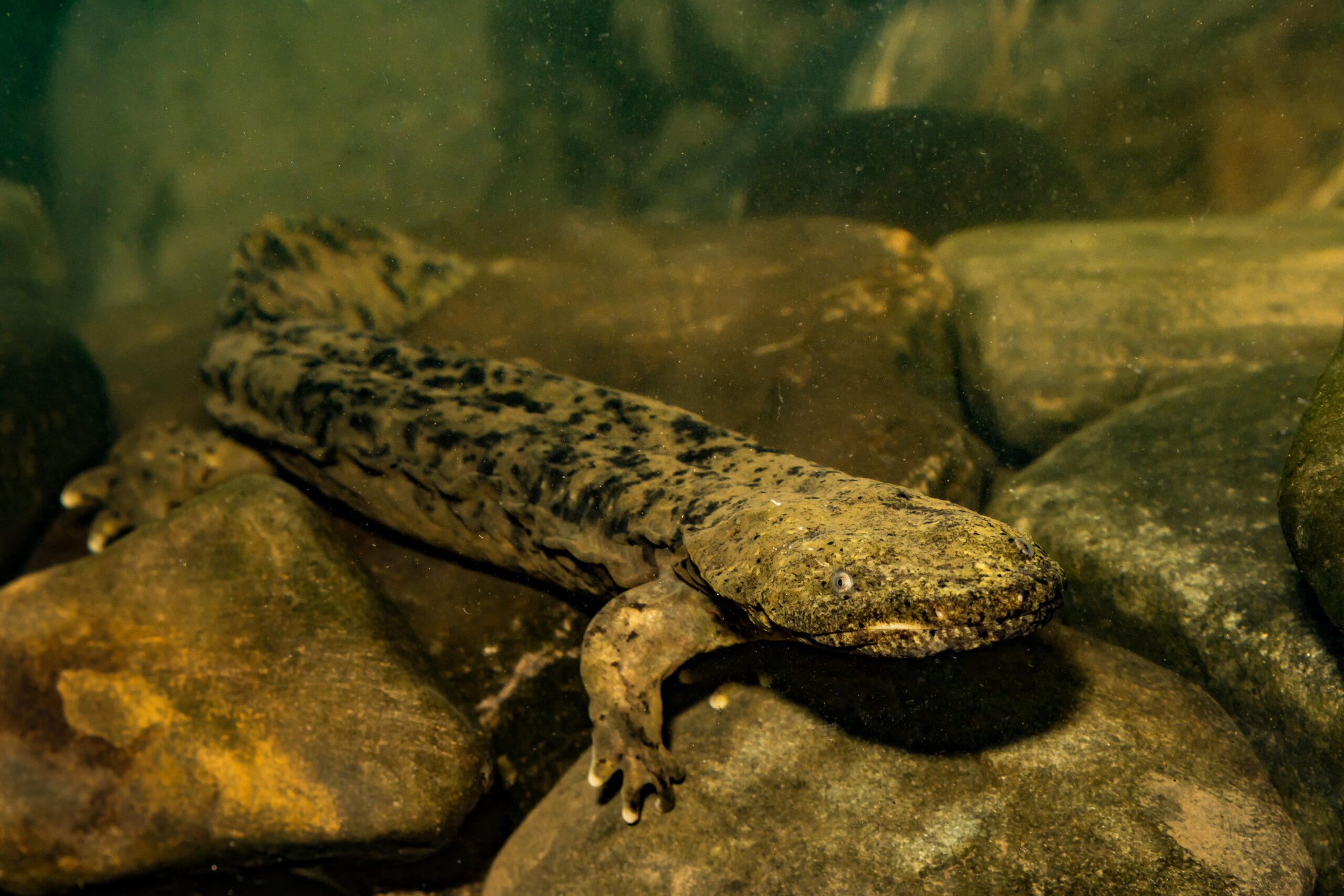
The Hellbender is a large, aquatic salamander native to the streams and rivers of North American rainforests. It has a flattened body and wrinkled skin, which helps it absorb oxygen from the water. Hellbenders are nocturnal and prefer rocky riverbeds where they can hide from predators. They are important for controlling fish populations but are threatened by water pollution and habitat degradation.
Purple Frog
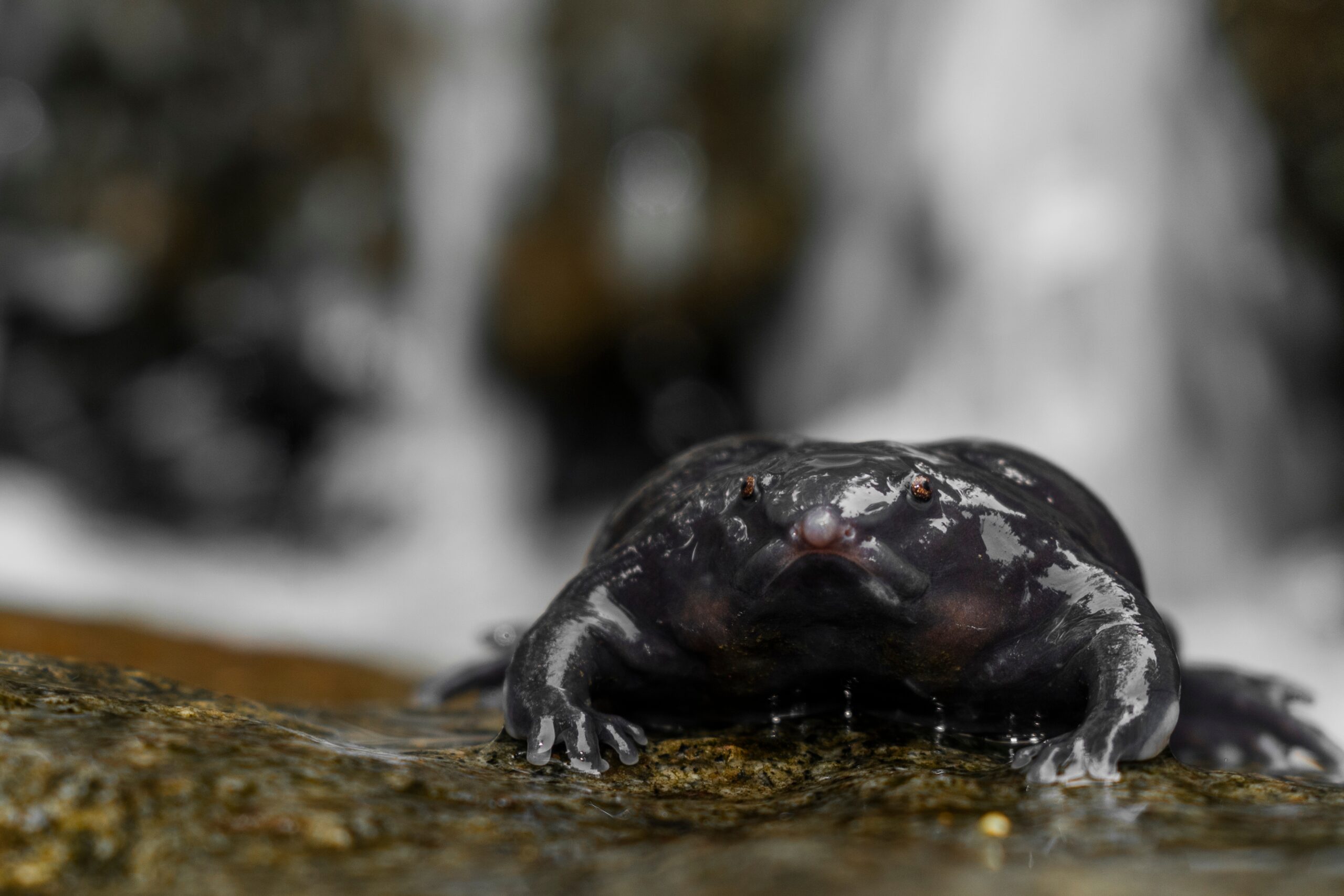
The Purple Frog, with its bloated body and pointed snout, is one of the most unusual amphibians. Found in the rainforests of India, it spends most of its life underground. It emerges only during the monsoon season to breed in temporary pools. Its diet consists mainly of ants and termites. Despite being discovered relatively recently, it is already endangered due to habitat loss.
Malayan Horned Frog
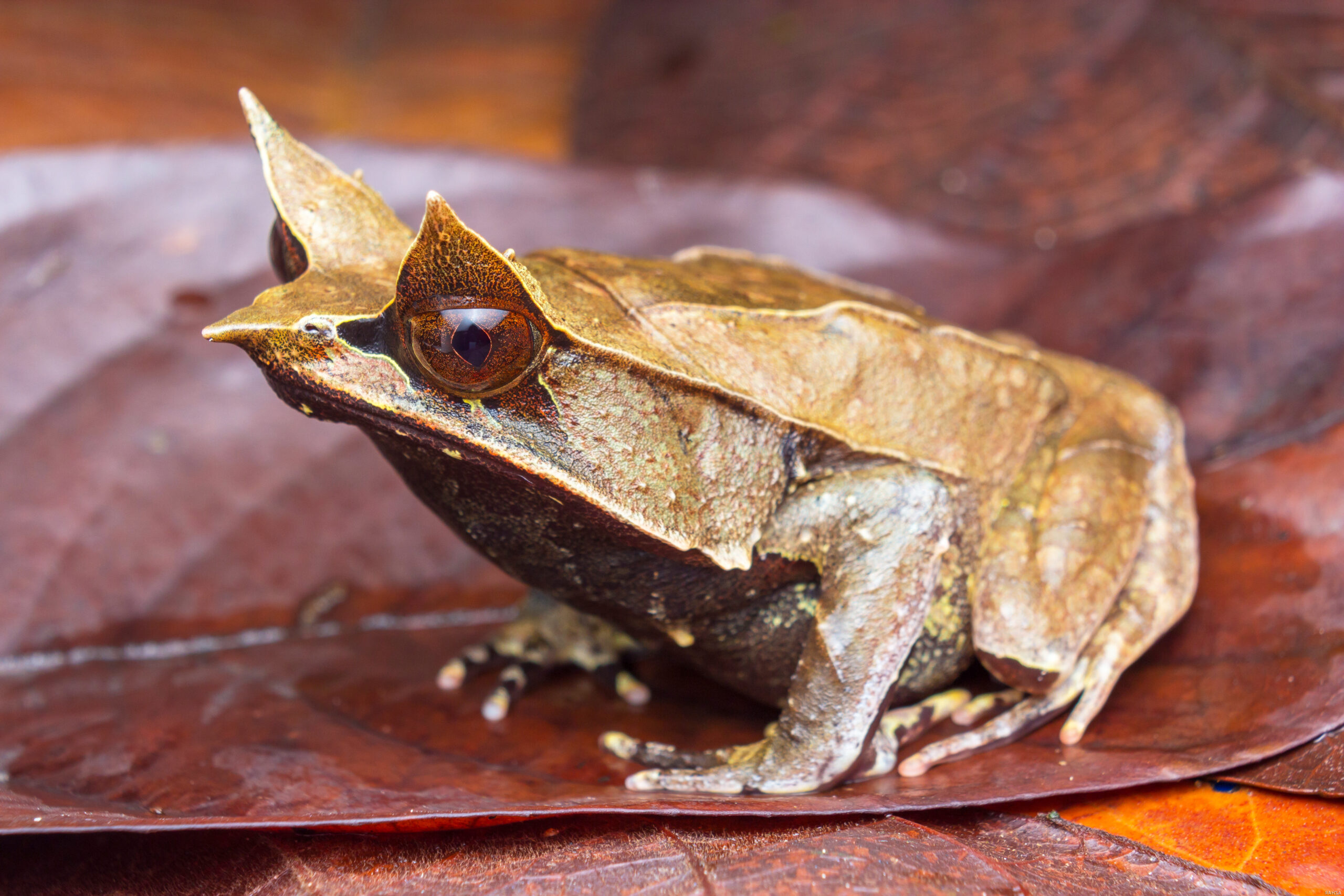
The Malayan Horned Frog is known for its unique, leaf-like appearance. Its body resembles a dry leaf, providing excellent camouflage in the rainforests of Southeast Asia. These frogs are ambush predators, waiting for prey such as insects or small animals to come near. Their large size and distinctive “horns” above their eyes make them a fascinating species. However, deforestation poses a significant threat to their survival.
Lemur Leaf Frog
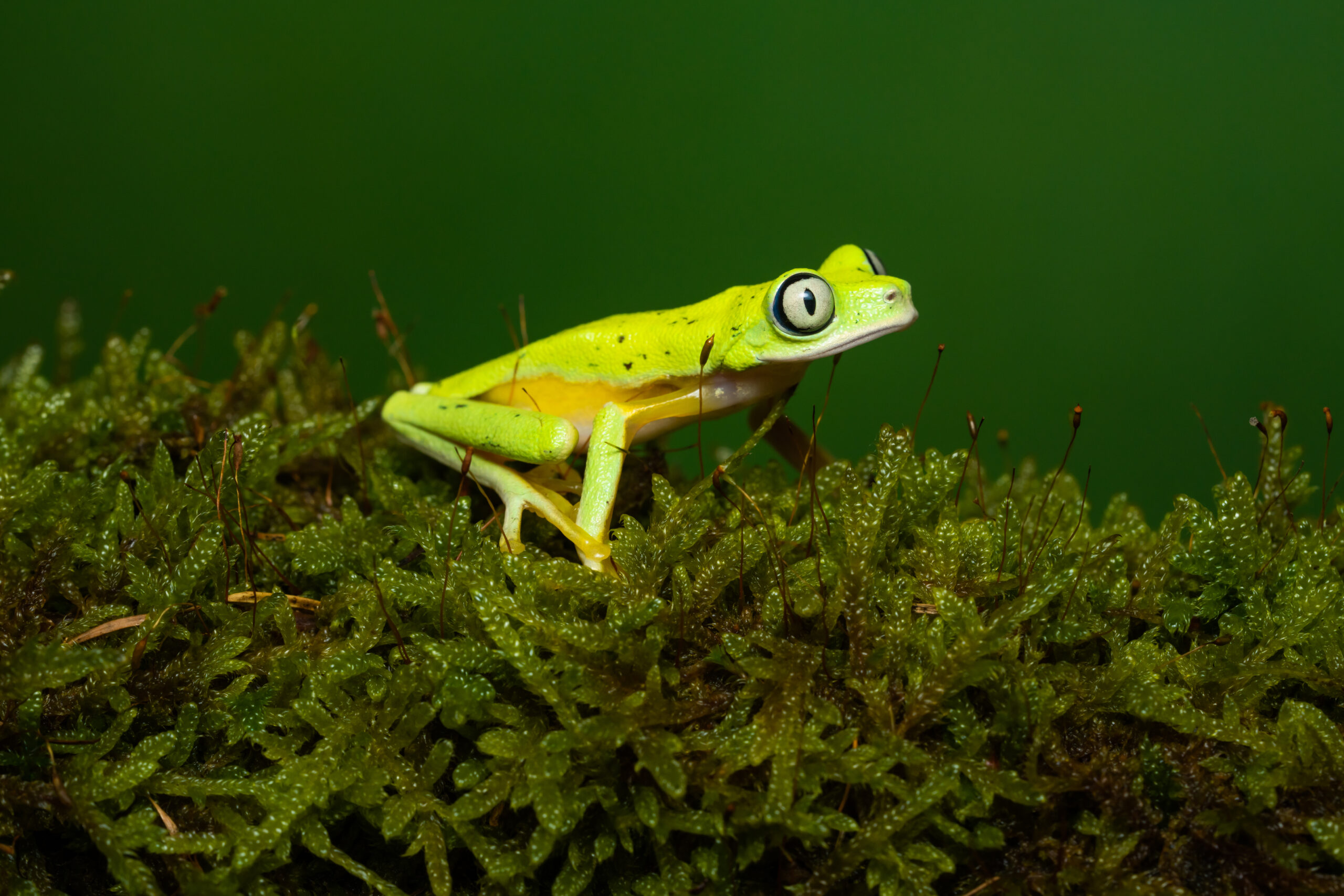
The Lemur Leaf Frog is a small, nocturnal amphibian found in the rainforests of Central America. It has large, bulging eyes and bright green skin that helps it blend into the leaves. These frogs are active at night, hunting for insects in the trees. Their population has drastically declined due to habitat destruction and disease. Conservation efforts are underway to protect this delicate species.
Wallace’s Flying Frog
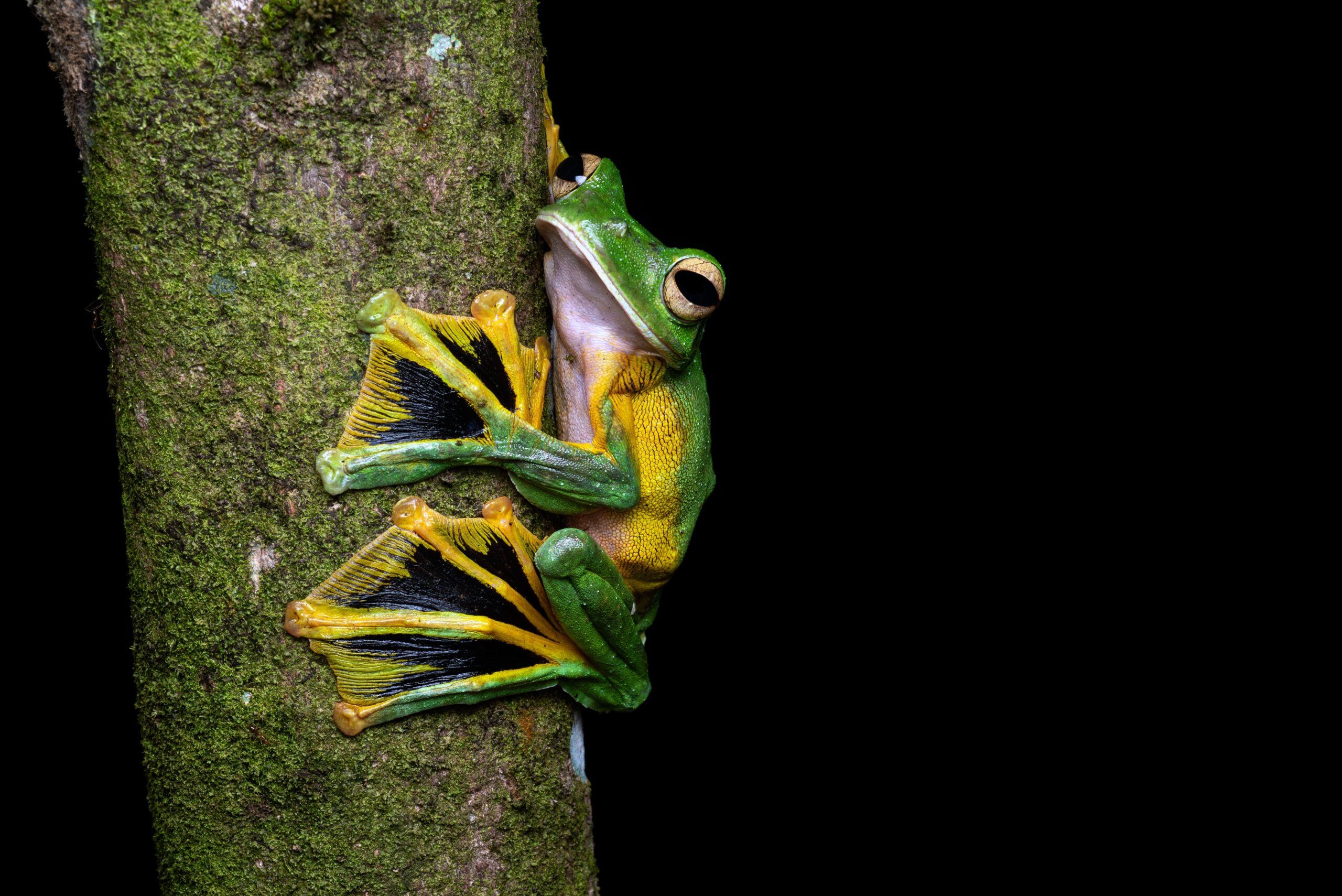
Wallace’s Flying Frog is known for its ability to glide between trees. Found in Southeast Asia’s rainforests, this frog has large webbed feet that act like parachutes. It leaps from tree branches, covering long distances through the air. Its bright green body blends with leaves, providing excellent camouflage. Despite their flying abilities, they are vulnerable due to habitat loss.
Anderson’s Salamander
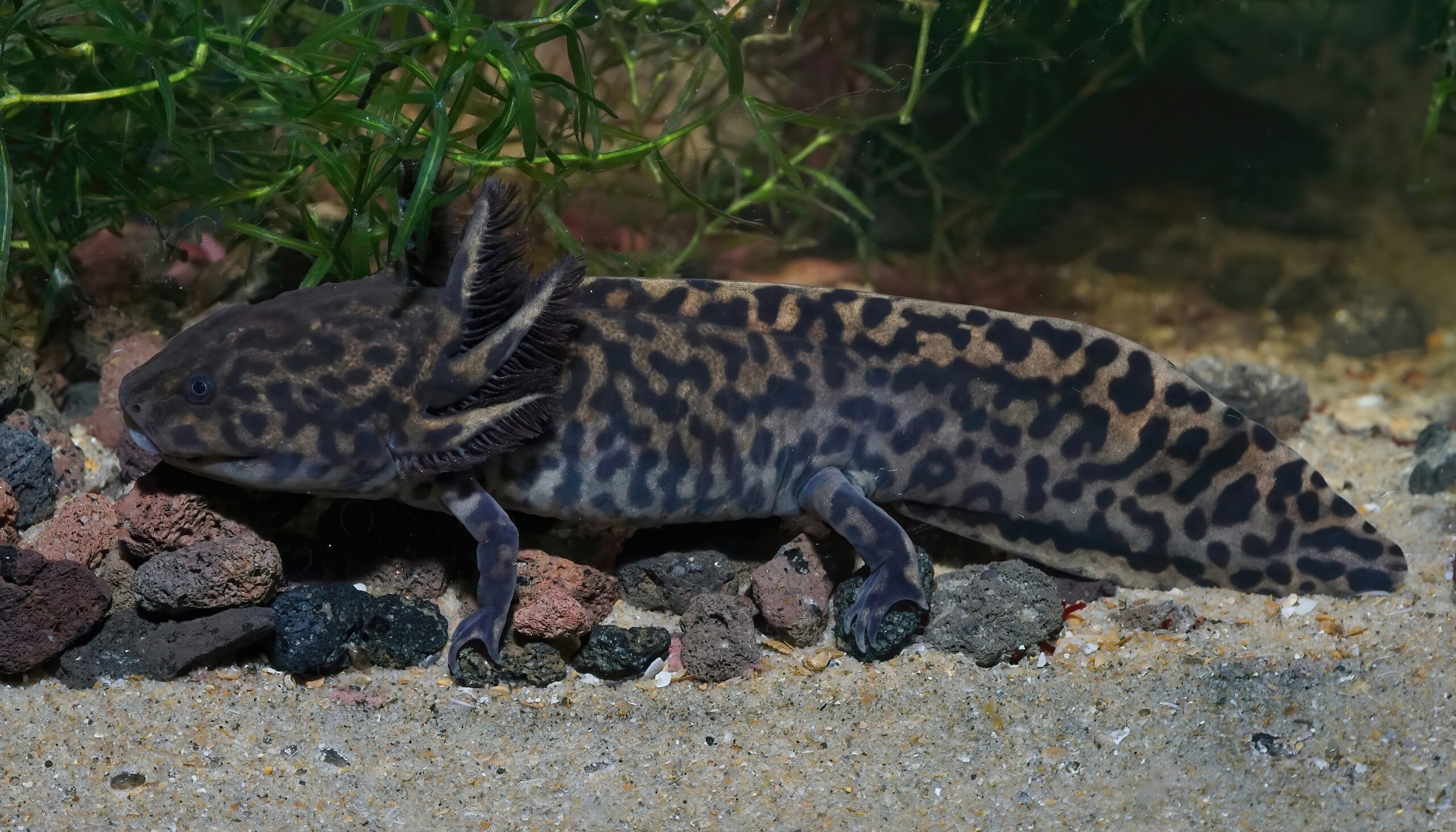
Anderson’s Salamander is a large, aquatic salamander found in the cool, wet environments of Mexico’s rainforests. It has dark, mottled skin that helps it blend into the murky waters it inhabits. This species spends its life in water, using external gills to breathe. It preys on small fish and invertebrates. Overfishing and water pollution threaten its survival.
Barred Tiger Salamander
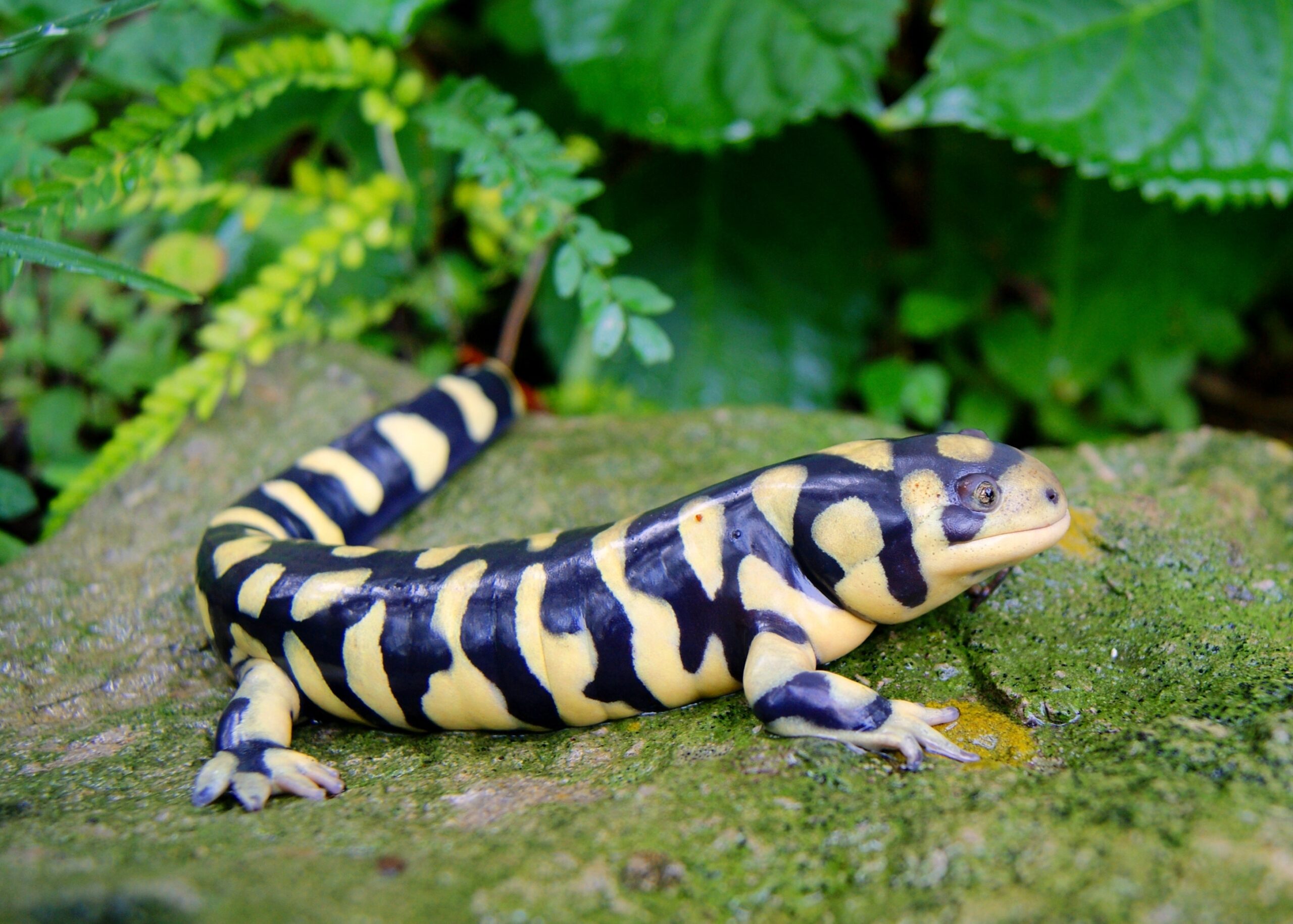
The Barred Tiger Salamander is a striking amphibian with bold yellow and black stripes. Native to North American rainforests, it is one of the largest salamanders. It spends much of its life burrowed underground, emerging only after rains. These salamanders feed on insects, small mammals, and other amphibians. Habitat destruction is causing its population to decline.
Mountain Chicken Frog
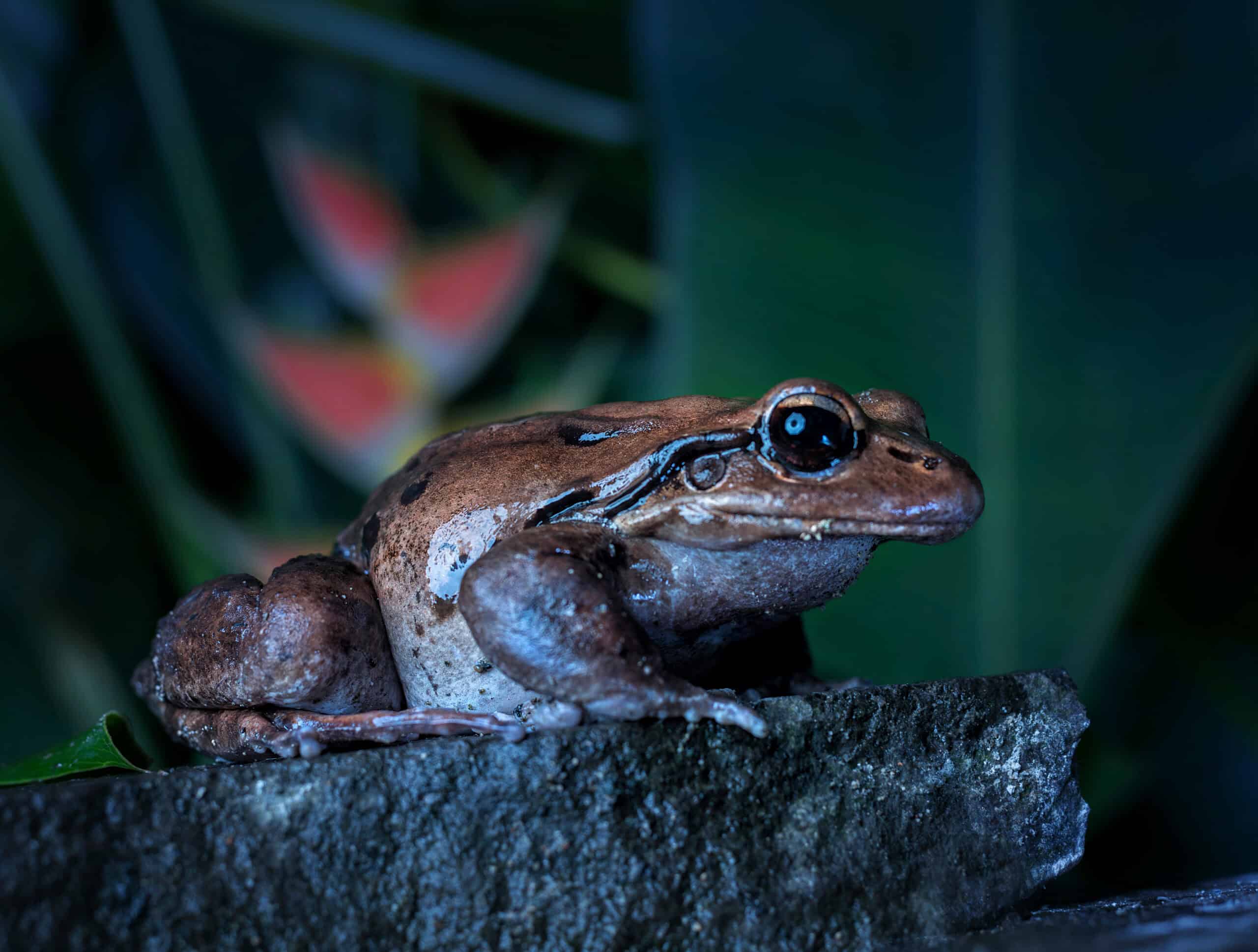
The Mountain Chicken Frog, despite its name, is not a bird but a large frog found in the Caribbean rainforests. It has a plump body and powerful legs, making it one of the largest frogs in the world. This species primarily hunts at night, feeding on small animals and insects. Sadly, it is critically endangered due to disease and habitat loss.
Darwin’s Frog
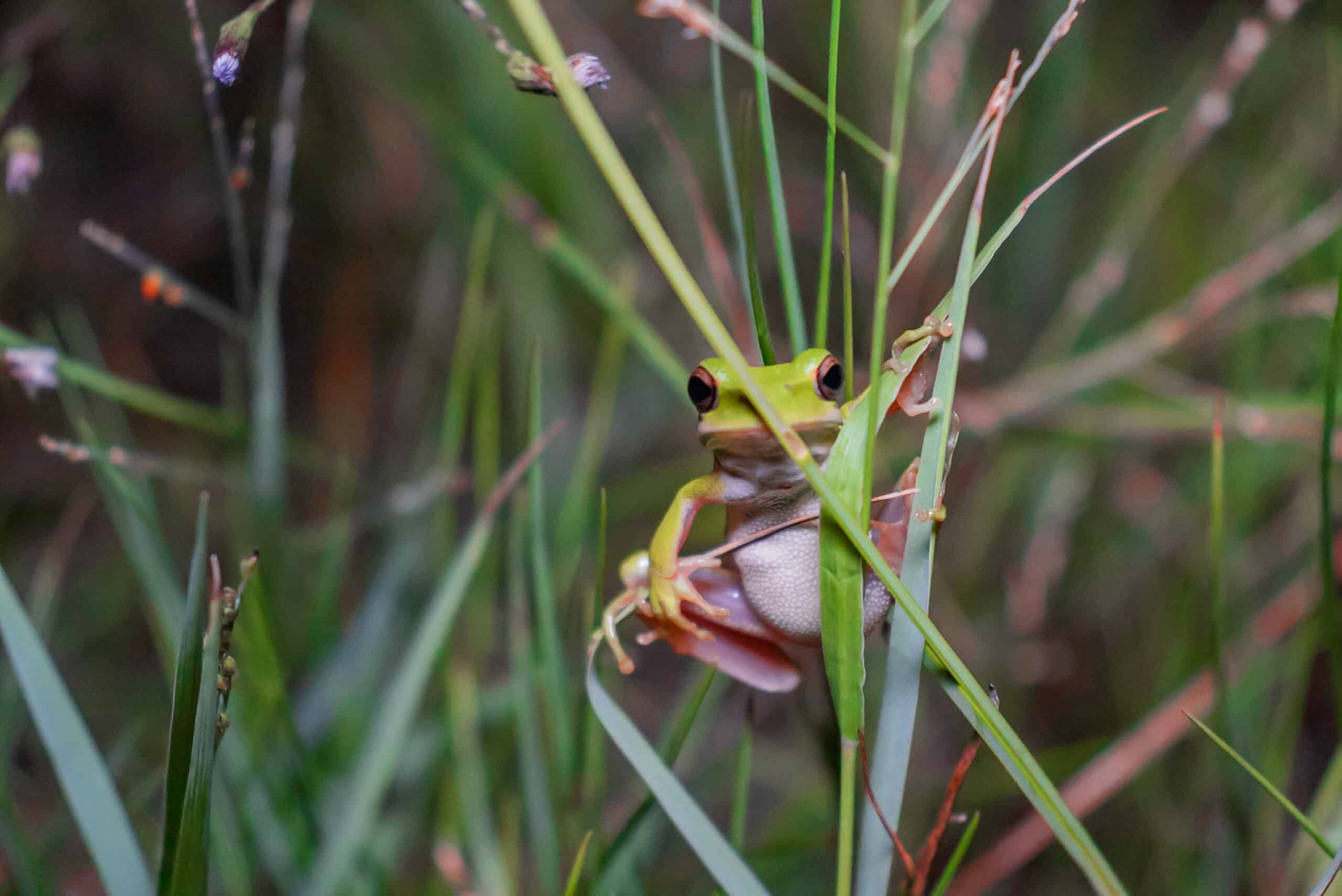
Darwin’s Frog is famous for its unusual reproductive behavior. Males carry fertilized eggs in their vocal sacs until the tadpoles develop. Found in the rainforests of Chile and Argentina, this small frog has a pointed nose and brownish-green skin, resembling a leaf. It thrives near streams where it can hunt insects. This species is threatened by habitat loss and climate change.
Hourglass Tree Frog
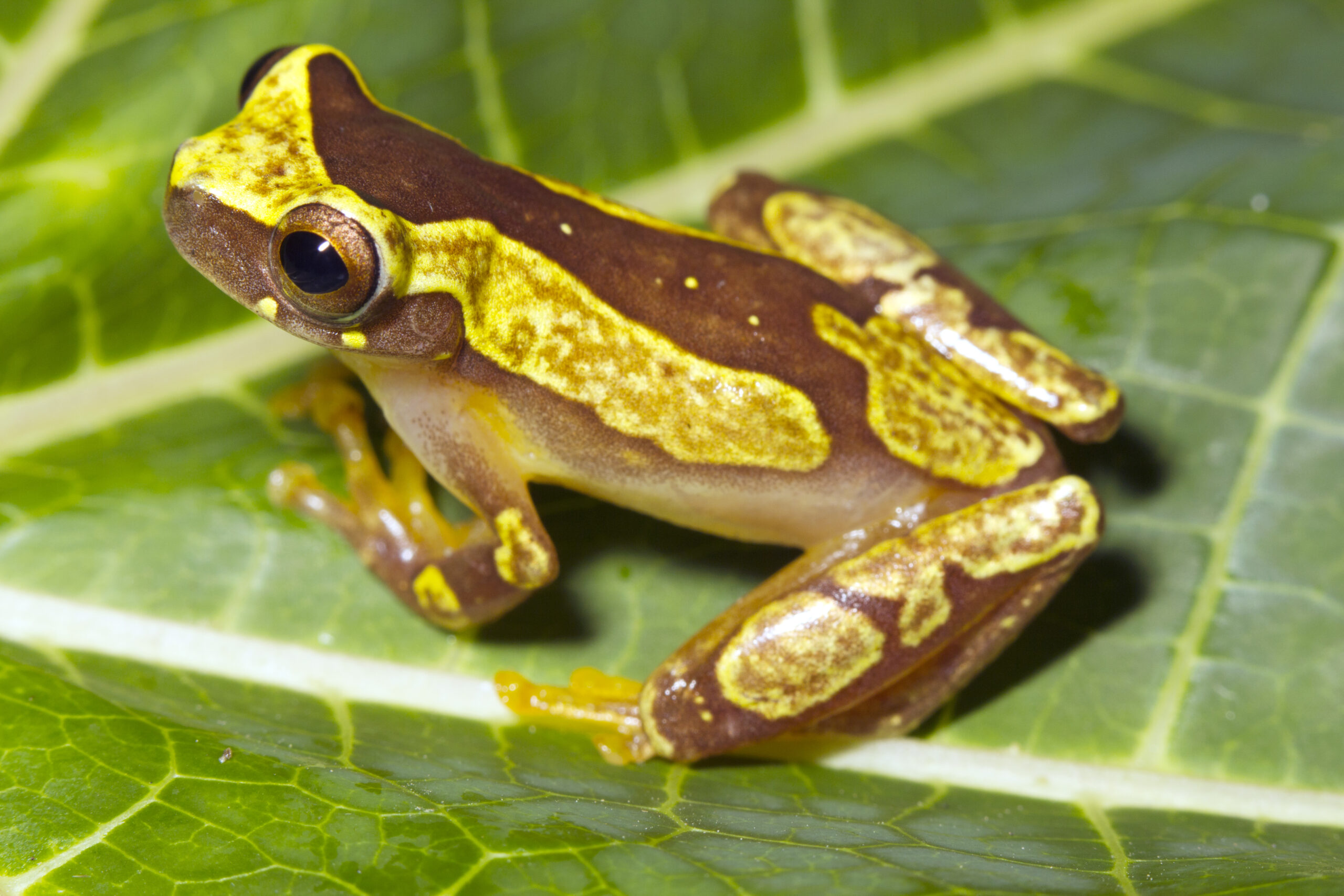
The Hourglass Tree Frog gets its name from the distinct hourglass-shaped marking on its back. Found in Central and South American rainforests, this frog is small but brightly colored. Its translucent skin allows its internal organs to be visible. It lives high in the forest canopy, where it hunts insects. Deforestation poses a serious threat to this species.
Splendid Leaf Frog
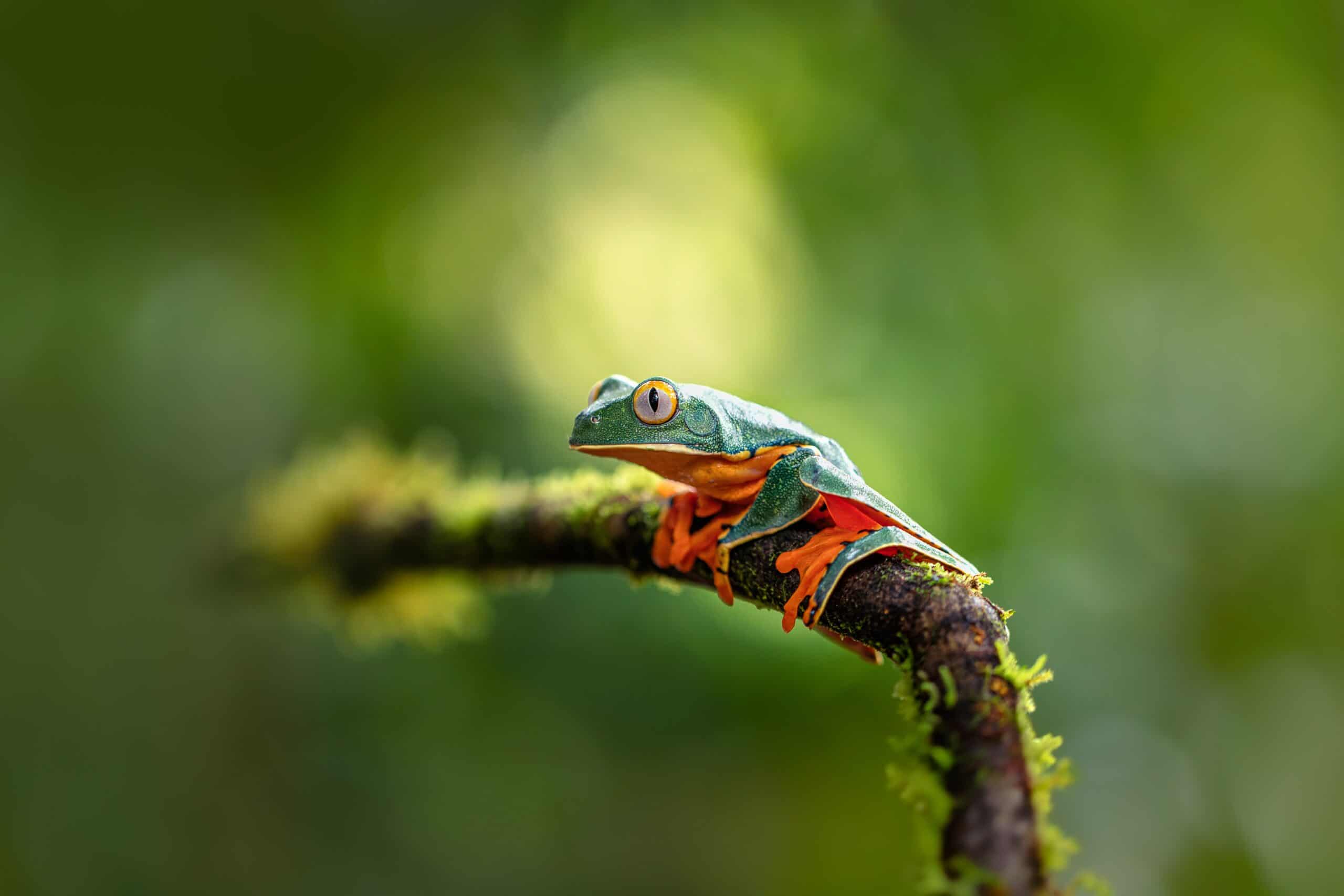
The Splendid Leaf Frog is a brightly colored amphibian native to Central American rainforests. It has vivid green skin with orange legs and striking red eyes. This frog prefers the humid treetops, where it hides among leaves. Its large eyes help it spot prey at night. Despite its beauty, habitat destruction is a major threat to its population.
Vietnamese Mossy Frog
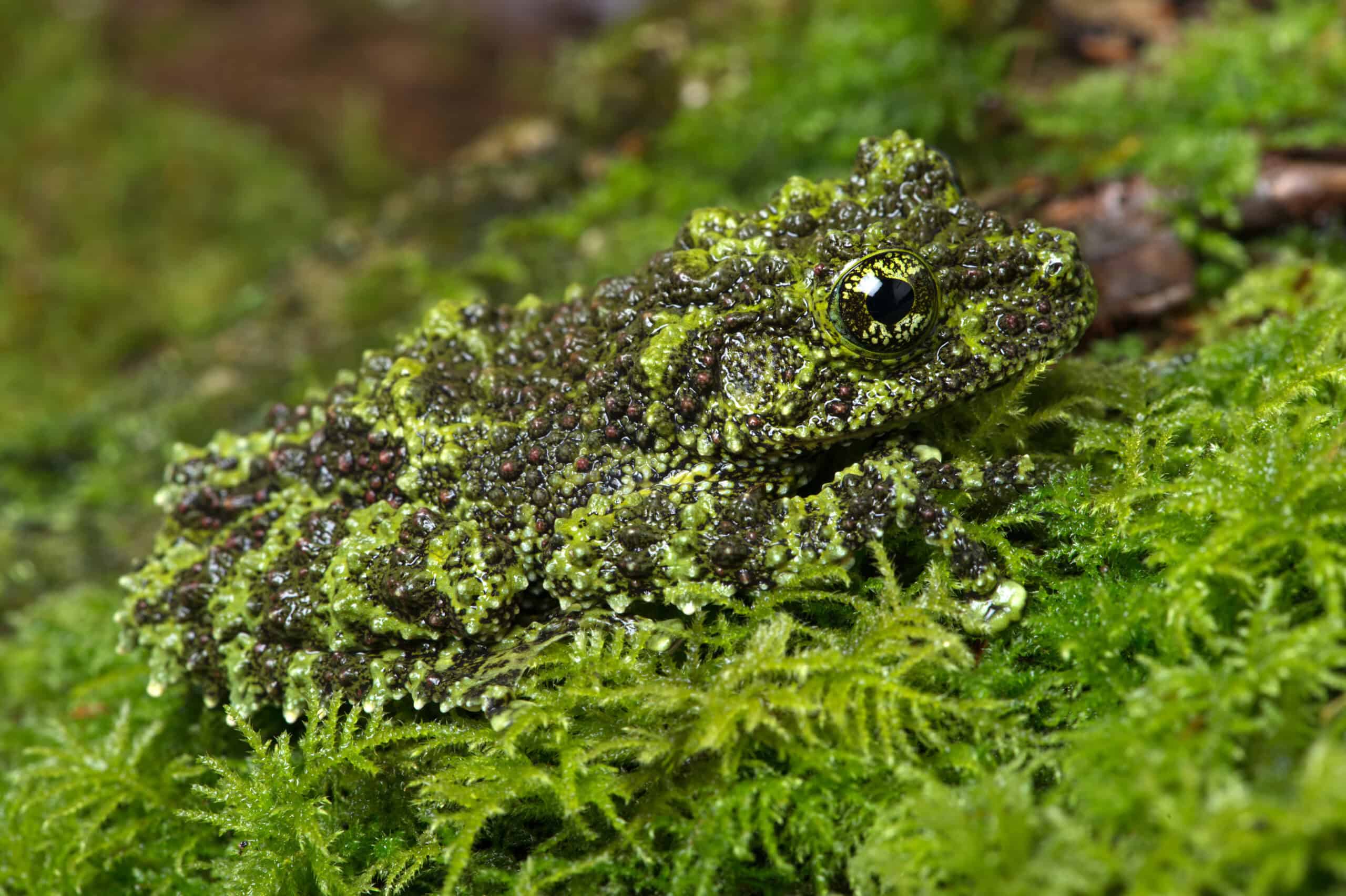
The Vietnamese Mossy Frog has a unique appearance, resembling a clump of moss. Found in the rainforests of Vietnam, its green and black mottled skin provides excellent camouflage. It spends most of its time hidden in water or among rocks, hunting for insects. This species is highly vulnerable due to habitat destruction and the illegal pet trade.
Axolotl
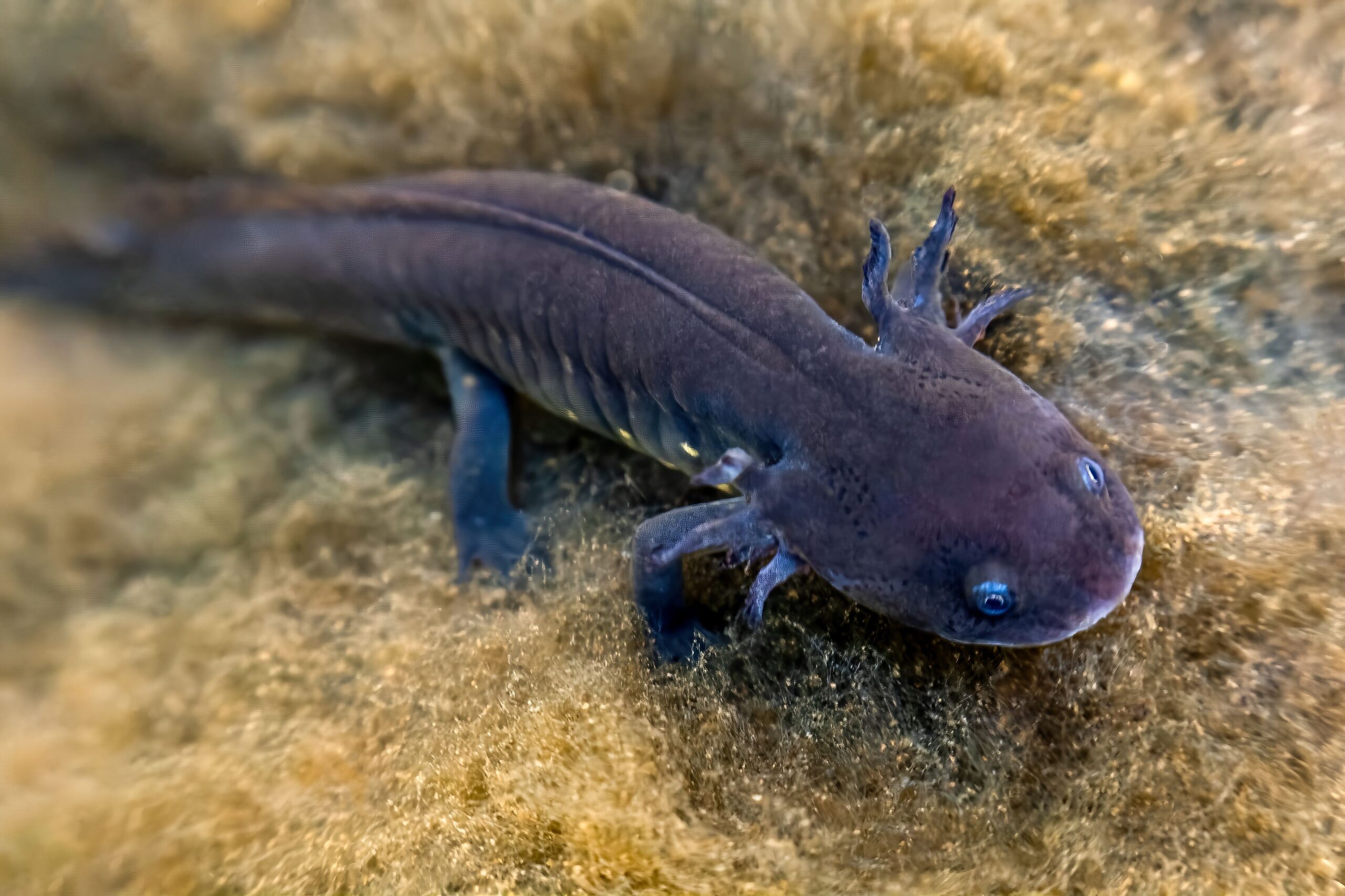
The Axolotl is a unique amphibian found in the lakes and canals of Mexico’s rainforests. Unlike most amphibians, it retains its juvenile traits throughout its life, a phenomenon called neoteny. It has a soft, elongated body with external gills that resemble feathery branches, allowing it to breathe underwater. Its ability to regenerate limbs makes it a subject of scientific interest. However, habitat loss and pollution have made the Axolotl critically endangered in the wild.
This article originally appeared on Rarest.org.
More from Rarest.org
1978 Kennedy Half Dollar Value Guide

The 1978 Kennedy half dollar is made of 75% copper and 25% nickel. The core of the coin is made of pure copper while its surface is clad with a mixture of nickel and copper. Read More.
16 Native Species Threatened by Human Activity
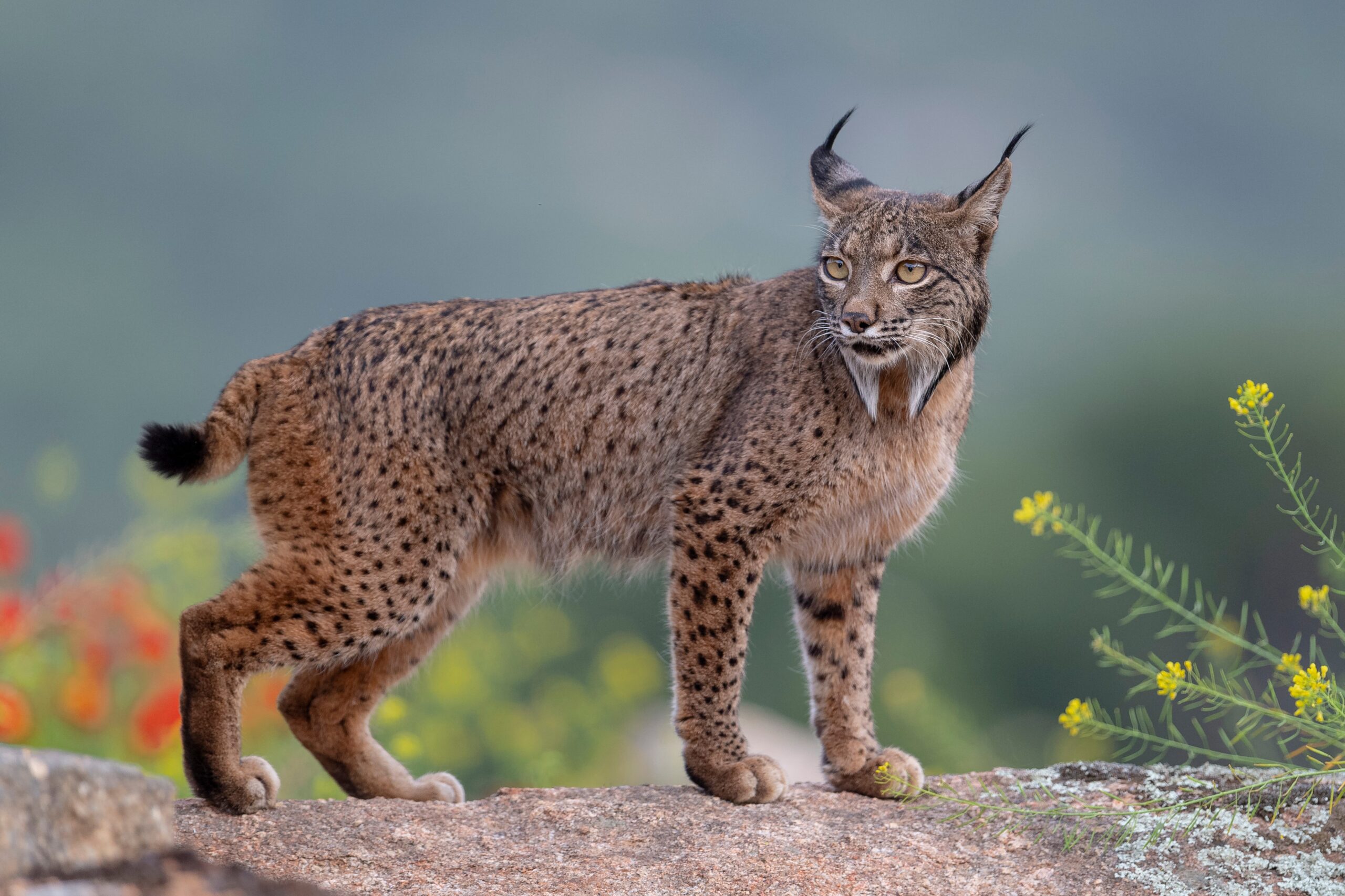
Human activity is rapidly impacting wildlife across the globe, pushing many native species to the brink of extinction. Read More.
21 Fascinating Insects That Play an Important Role in Ecosystems
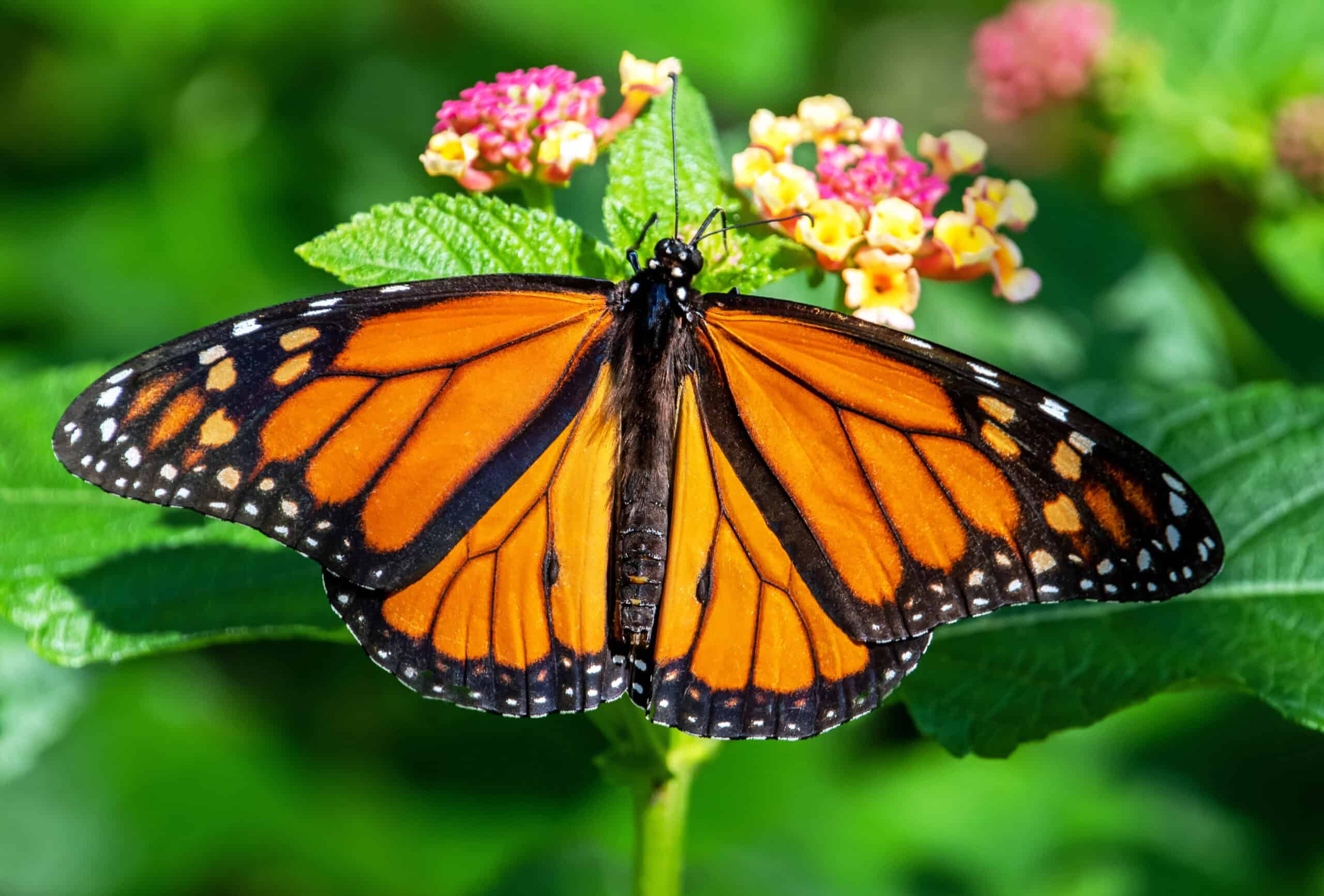
Insects are some of the most vital organisms in ecosystems around the world. Though small, they impact everything from pollination to decomposing organic matter. Read More.
